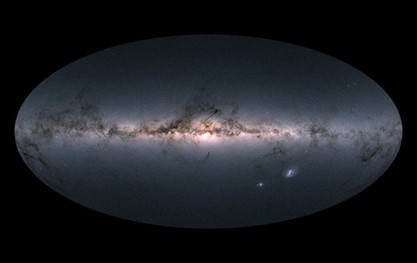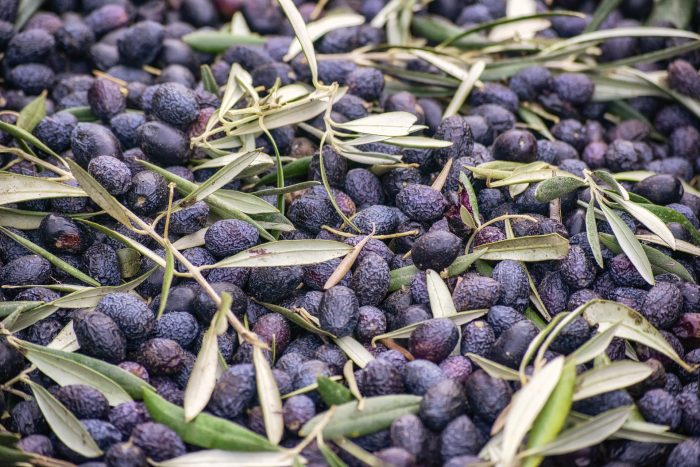A New Study Links Our Diet With Dementia
Posted by Phil Heler on November 30, 2021A new study demonstrates that those of us who eat ‘anti-inflammatory diet’ have a lower risk of developing dementia later in life. The study estimated that there is a three times greater risk of dementia linked to diets that are low in these food groups.
It is difficult not to be concerned by the significant objectives behind COP26. Can we really be net zero by 2050 (i.e., not adding any greenhouse gases to the atmosphere) ? As custodians of our planet, I certainly hope that we can. The combinations of chemical events that lie behind our ecosystem on Earth and the conditions that permitted it to happen are extraordinarily rare.
The universe was created 13.8 billion years ago, and our sun (or star) is 4.6 billion years old. Our sun, like all stars, was formed by a dense cloud of hydrogen. The powerful intense increasing forces of gravity caused this dense cloud to collapse in on itself.
This collapse caused the star to ignite because of nuclear fusion. Nuclear fusion then created all the elements in the periodic table. This process has been repeated many times in our universe on an unimaginable scale. The difference is, in our case, this process culminated in a ludicrously rare commodity. Life.
The European Space Agency (ESA) launched the space observatory Gaia in 2013. This has since mapped 1.7 billion stars in our galaxy. This is really the tip of the iceberg as it is estimated that the ‘Milky Way’ comprises somewhere between 100-300 billion stars (the uncertainty is caused by weight of numbers). Below is the famous map of the universe that has been generated by Gaia.
But our sun, which is in an outer arm (Orion-Cygnus arm) of the Milky Way is unique. Our sun governs a small solar system which has been unusually stable since its creation.
Our solar system is unique because it only has one sun. As least half of the known solar systems in our galaxy have two (known as binary solar systems) or multiple suns. Often these solar systems are unimaginably unstable and violent, offering extreme and volatile environments that are subject to intense gravity and temperatures.
Many stars are also red dwarfs which are usually much smaller and cooler than our sun. Many others are also much bigger than our sun such as Antares or Betelgeuse. The diameter of Antares is 700 times bigger than our sun.
In a ridiculously unlikely event, our small planet has gathered some of the elements of the periodic table generated by nuclear fusion and evolved complex molecules that eventually formed life. We, as an animal, took hundreds of millions of years to evolve.
We required a safe and stable environment for 4.5 billion years to perform this miracle. Animal life (unlike bacteria) is extremely fragile and prone to becoming extinct because of its specific requirements (i.e., a balanced and reliable environment). There have been infrequent mass extinction events, but life has persisted. This makes us quite unique whether we know it not.
The nearest major star cluster to us is the Hyades cluster which is 151 light years away from. In the time it takes the light to travel from these stars to us our civilisation has become industrialised. The cost of this is that global temperatures have increased by 1oC compared to pre-industrial levels. As Raymond Chandler once said, ‘there is no trap so deadly as the trap you set for yourself.’
But during this time unimaginable progress has been in technology and science, so there is hope and it is surprising what we can achieve. In the last 25 years alone the understanding of our universe and our place within in it has undergone a remarkable expansion. Rapid progress has been made in almost all scientific fields and particularly in medicine and healthcare.
In July this year I wrote an article about how cardiovascular health is linked to our brain health. An article published in the scientific journal ‘Science’ on June 25th, 2021 demonstrated that the hunter-gatherer Tsimane people from the Bolivian Amazon experience a 70% slower decrease in brain volume during their lives when compared to Western populations.
A previous study published in 2017 in the Lancet found that they had the lowest levels of coronary atherosclerosis ever recorded and now it appears that this also extends to brain atrophy. Fortuitously we don’t have to live in the Amazon to enjoy the same benefits. Much of this obviously is down to their diet. There is an increasing weight of evidence to support these findings.
Another study has just been published on November 10th, 2021, in the online issue of Neurology, the medical journal of the American Academy of Neurology. This also supports this link between diet and brain health.
This new study demonstrates that those of us who consume what they call an ‘anti-inflammatory diet’ have a lower risk of developing dementia later in life. The diet has the fundamentals of a Mediterranean type of diet that includes more fruits, vegetables, beans, and tea or coffee. The study estimated that there is a three times greater risk of dementia linked to diets that are low in these food groups.
The study monitored 1,059 participants in Greece. The average age of the people involved was 73 years old and, at this point in their lives, there was no expressive evidence of dementia. Each participant filled out a food frequency questionnaire. This was designed to determine the potential of their diet to inhibit low level physiological inflammation. The questionnaire detailed the main food groups consumed during a calendar month.
This included dairy products, cereals, fruits, vegetables, meat, fish, legumes (including beans, lentils and peas), added fats and alcohol. Each diet was then broken down and given a dietary inflammatory index score ranging from -8.87 to 7.98. A high index (i.e., a positive figure) indicated a diet more likely to promote inflammation. This would be typically represented by lower consumption of fruits, vegetables, beans, and tea or coffee.
The study then analysed the diets of those people with a low inflammatory index score of -1.76 or lower. These people clearly consumed a diet that was much more likely to reduce inflammation in the body. They typically ate an average per week of 20 servings of fruit, 19 of vegetables, four of beans or other legumes and 11 of coffee or tea per week. They then analysed people who had a high inflammatory index (0.21 and above) and diet more likely to promote inflammation. These people ate an average per week of nine servings of fruit, 10 of vegetables, two of legumes and nine of coffee or tea.
Researchers followed up their initial dietary assessments by monitoring the participants over the next 3 years. During this timeframe 62 people, or 6%, developed dementia. When the study assessed the diets related to these people it was clear that they consumed diets that had a higher inflammatory index. After adjusting for age, sex and education, the study discovered that each one-point increase in dietary inflammatory index was associated with a 21% increase in dementia risk. The people who had the worst inflammatory index were three times more likely to develop dementia.
One of the lead researchers Nikolaos Scarmeas of the National and Kapodistrian University of Athens in Greece, summarises by commenting ‘there may be some potent nutritional tools in your home to help fight the inflammation that could contribute to brain ageing. Diet is a lifestyle factor you can modify, and it might play a role in combating inflammation, one of the biological pathways contributing to risk for dementia and cognitive impairment later in life.’
The study was an observational one, not a clinical trial. It does not prove that eating an anti-inflammatory diet prevents brain ageing and dementia, it only shows an association. One other important dietary component of the study was the Mediterranean diet (or MD) as the research was of course undertaken in Greece. I have also written an article in May this year exploring the link between a MD and its mitigation in the onset of Alzheimer’s.
So, what does a Mediterranean-like diet comprise? As one would assume it is characterised by high intake of vegetables, legumes, fruits, and cereals. It has a high intake of unsaturated fatty acids (mostly in the form of olive oil), but low intake of saturated fatty acids (red meats and dairy) and a moderately high intake of fish. There is a low intake of meat and poultry, and a regular but moderate amount of alcohol, primarily in the form of wine and generally during meals.
More specifically the MD is particularly rich in strong plant antioxidants (or phytochemicals) called polyphenols. A high intake of polyphenols has been strongly linked to a variety of beneficial effects on our health. Although a single food or extract cannot replace the combination of natural phytonutrients in the MD, olives, and olive oil in particular offer unique and powerful health-promoting components. Olive oil polyphenols, like other MD polyphenols, exhibit multiple protective effects that inhibit cardiovascular risk factors, and promote the inhibition of inflammation.



